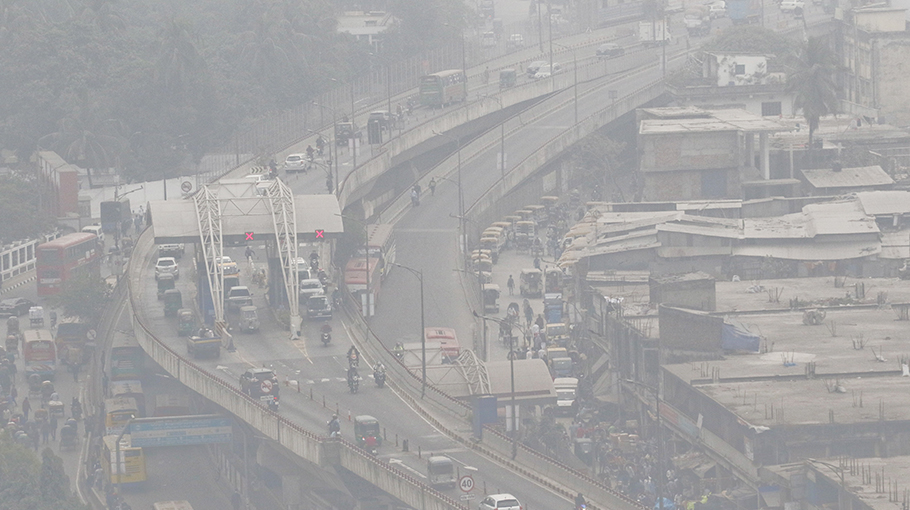DoE steps scanty to check Dhaka’s air pollution

Dhaka is now the most polluted city. Now question arises what is the role of the two city corporations and the department of environment (DoE) to control this air pollution? Besides, brick kilns and black smoke of factories, the Department of Environment has not taken effective measures to prevent black smoke released by vehicles.
Digging of roads is going on in different areas of Dhaka including Karwan Bazar, Tejgaon, Mohakhali, Banani, Mohammadpur, Mirpur of DNCC and in Motijheel, Fakirerpool, Jatrabari, Jurain of DSCC. Although the two mayors say they are working to overcome the problem, there is no visible progress. The department of the environment (DoE) is also allegedly very indifferent in this regard.
The environmentalists say Dhaka North City Corporation (DNCC) and Dhaka South City Corporation (DSCC) have failed to take effective steps to reduce air pollution. On the contrary, they are ‘increasing air pollution’ through unplanned and uncontrolled road digging and construction work.
According to the DoE report, Ahsan Manzil, Abdullahpur, Motijheel, Dhanmondi-32, Sangsad Bhaban, Agargaon, Mirpur-10 and Gulshan-2 have the highest levels of pollution. Under the Environmental Protection Act of 1995, on January 26, a mobile court of the Department of Environment launched a campaign to close illegal brick kilns in Dhamrai, Dhaka. At that time, eight brickfields were fined Tk 57 lakh by Executive Magistrate Tamjeed Ahmed to prevent air pollution. On the other hand, DSCC said, they also sprinkled water on the road. But they could not say exactly how many vehicles, how many liters of water was sprayed.
The Bangladesh Environment Conservation Act 1995 was enacted for fulfilling three major objectives namely, conservation of environment, improvement of environmental standards and the control and mitigation of environmental pollution. The Act was formulated on the basis of the policy framework provided by the Environment Policy of 1992 and the National Environment Management Action Plan (NEMAP) of 1995.
The BECA also defines certain environmental offences and prescribes for their punishments. Moreover, to supplement and fulfill the objectives of the Act, the Bangladesh Environment Conservation Rules (BECR), 1997 was adopted in accordance with section 20 of the BECA, 1995.
However, the Bangladesh Environment Conservation Act, 1995 and Rules, 1997 are not free from a number of loopholes or shortcomings. There is a maxim that 'prevention is better than cure',
The Department of Environment said, they are working on those two issues with importance. Operations are being carried out in different areas almost every day and their drive will continue.
According to Health Department sources, more than 10,000 people die every year in Dhaka alone due to air pollution. The High Court on February 6 criticised the authorities concerned of the government for their failure in taking effective measures to control air pollution in Dhaka and surrounding areas despite its repeated directives. Public health is at serious risk due to air pollution. The people of Dhaka could not get good air even for a day.
Tejgaon area was the most polluted area in Dhaka city. DNCC is doing a lot of work to stop unplanned digging on roads, dumping construction materials on roads, conservation of reservoirs. The city corporation and the department of environment need to do more to stop this pollution.




